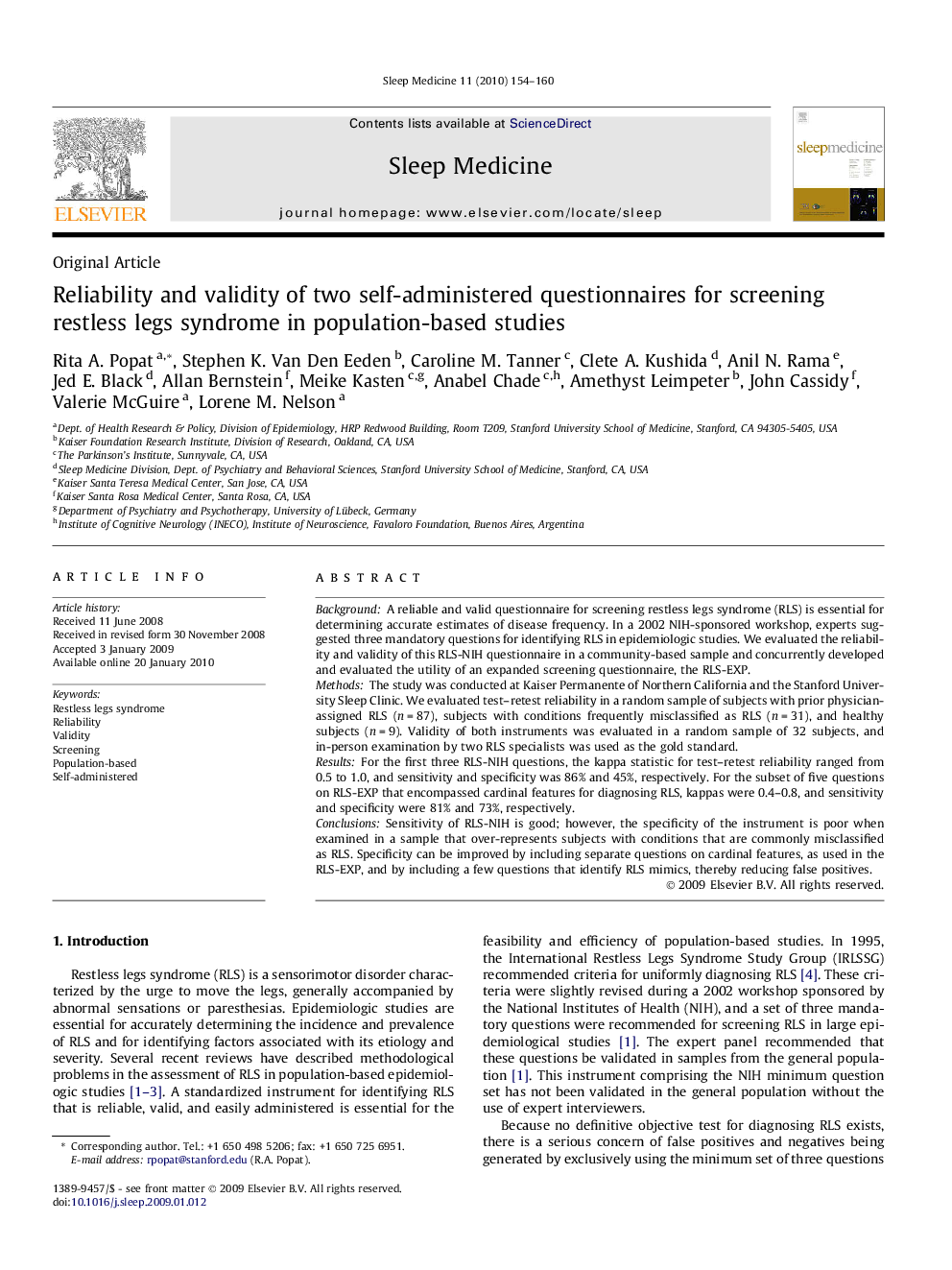| Article ID | Journal | Published Year | Pages | File Type |
|---|---|---|---|---|
| 3176472 | Sleep Medicine | 2010 | 7 Pages |
BackgroundA reliable and valid questionnaire for screening restless legs syndrome (RLS) is essential for determining accurate estimates of disease frequency. In a 2002 NIH-sponsored workshop, experts suggested three mandatory questions for identifying RLS in epidemiologic studies. We evaluated the reliability and validity of this RLS-NIH questionnaire in a community-based sample and concurrently developed and evaluated the utility of an expanded screening questionnaire, the RLS-EXP.MethodsThe study was conducted at Kaiser Permanente of Northern California and the Stanford University Sleep Clinic. We evaluated test–retest reliability in a random sample of subjects with prior physician-assigned RLS (n = 87), subjects with conditions frequently misclassified as RLS (n = 31), and healthy subjects (n = 9). Validity of both instruments was evaluated in a random sample of 32 subjects, and in-person examination by two RLS specialists was used as the gold standard.ResultsFor the first three RLS-NIH questions, the kappa statistic for test–retest reliability ranged from 0.5 to 1.0, and sensitivity and specificity was 86% and 45%, respectively. For the subset of five questions on RLS-EXP that encompassed cardinal features for diagnosing RLS, kappas were 0.4–0.8, and sensitivity and specificity were 81% and 73%, respectively.ConclusionsSensitivity of RLS-NIH is good; however, the specificity of the instrument is poor when examined in a sample that over-represents subjects with conditions that are commonly misclassified as RLS. Specificity can be improved by including separate questions on cardinal features, as used in the RLS-EXP, and by including a few questions that identify RLS mimics, thereby reducing false positives.
